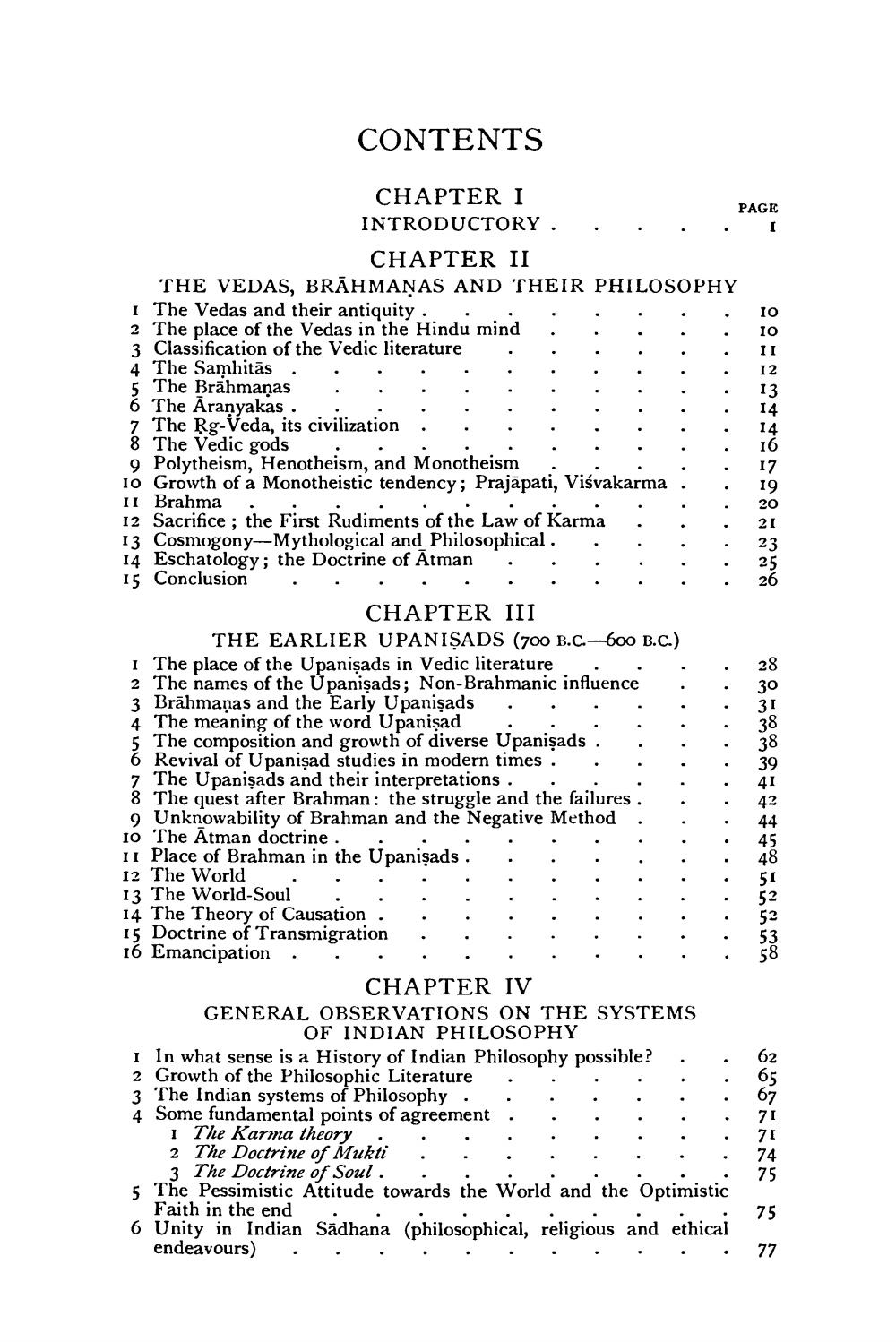________________
CONTENTS
CHAPTER I INTRODUCTORY.
CHAPTER II
THE VEDAS, BRAHMAŅAS AND THEIR PHILOSOPHY
I The Vedas and their antiquity.
2 The place of the Vedas in the Hindu mind
3 Classification of the Vedic literature
4 The Samhitās
The Brahmanas
6 The Aranyakas
7 The Rg-Veda, its civilization
8 The Vedic gods
9 Polytheism, Henotheism, and Monotheism
10 Growth of a Monotheistic tendency; Prajapati, Viśvakarma II Brahma
12 Sacrifice; the First Rudiments of the Law of Karma 13 Cosmogony-Mythological and Philosophical. 14 Eschatology; the Doctrine of Atman 15 Conclusion
CHAPTER III
THE EARLIER UPANIȘADS (700 B.C.-600 B.C.)
I The place of the Upanisads in Vedic literature 2 The names of the Upanisads; Non-Brahmanic influence
3 Brāhmaṇas and the Early Upanisads
4 The meaning of the word Upanisad
5 The composition and growth of diverse Upanisads
6 Revival of Upanisad studies in modern times.
7 The Upanisads and their interpretations.
8 The quest after Brahman: the struggle and the failures. 9 Unknowability of Brahman and the Negative Method 10 The Atman doctrine.
11 Place of Brahman in the Upanisads.
12 The World
13 The World-Soul
14 The Theory of Causation
15 Doctrine of Transmigration 16 Emancipation
CHAPTER IV
GENERAL OBSERVATIONS ON THE SYSTEMS OF INDIAN PHILOSOPHY
I In what sense is a History of Indian Philosophy possible?
2 Growth of the Philosophic Literature
3 The Indian systems of Philosophy
4 Some fundamental points of agreement
1 The Karma theory
2 The Doctrine of Mukti
3 The Doctrine of Soul.
5 The Pessimistic Attitude towards the World and the Optimistic
Faith in the end
6 Unity in Indian Sadhana (philosophical, religious and ethical endeavours)
PAGE
I
PERRELEASE
IO
10
II
12
13
14
14
16
17
19
20
21
23
25
26
28
30
31
38
38
39
41
42
44
45
48
51
52
52
53
62
71
71
74
75
75
77




